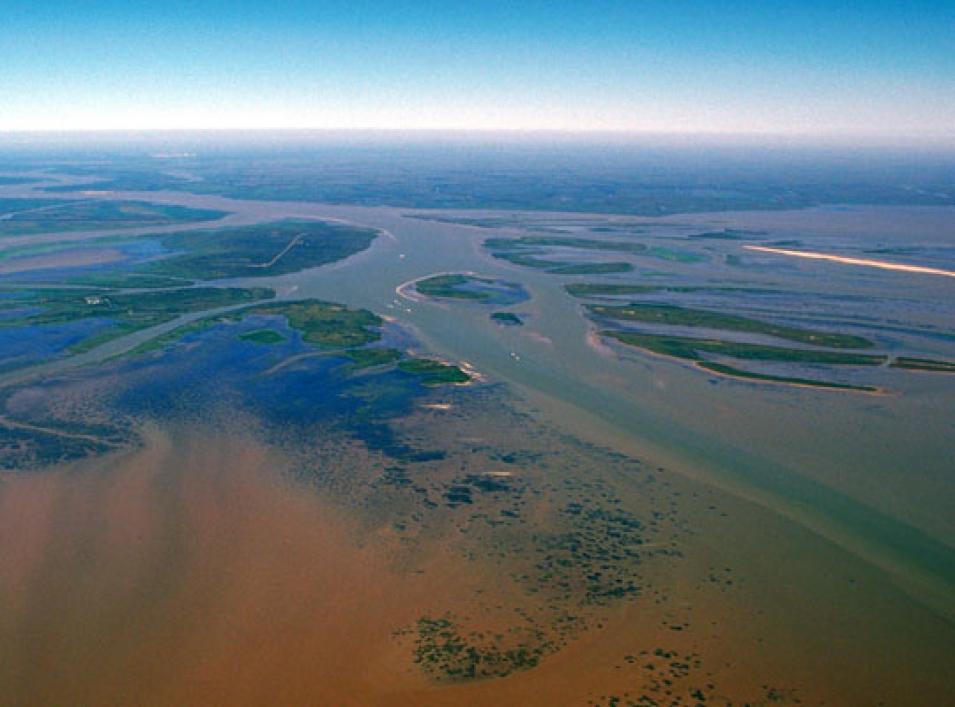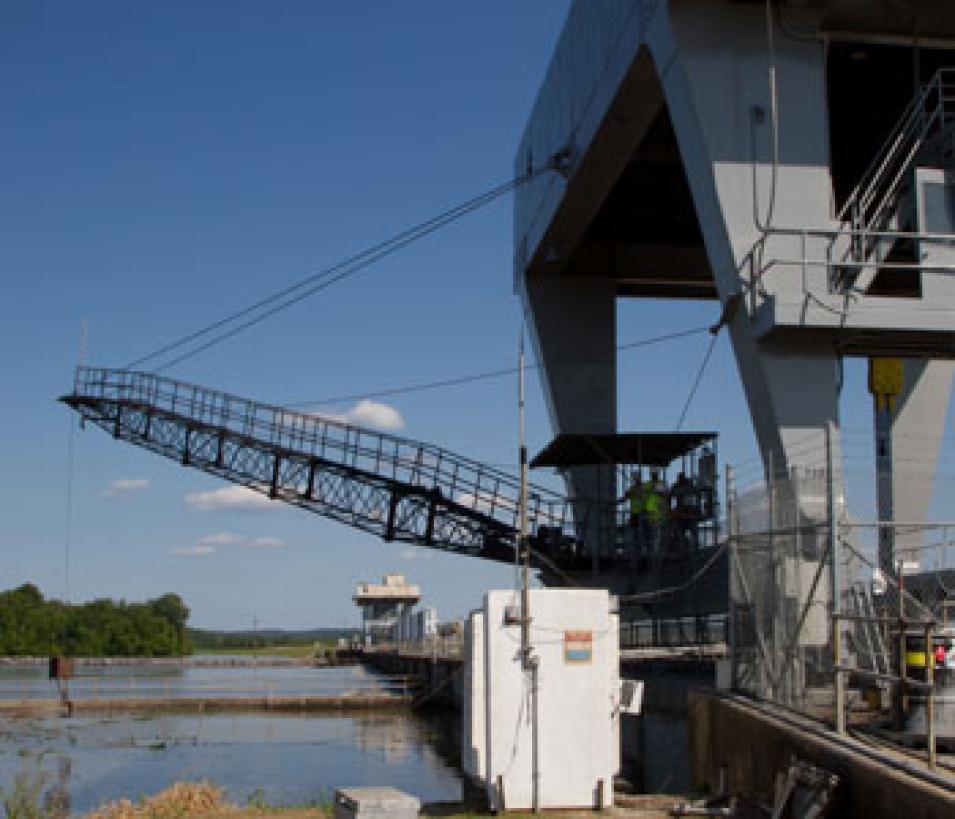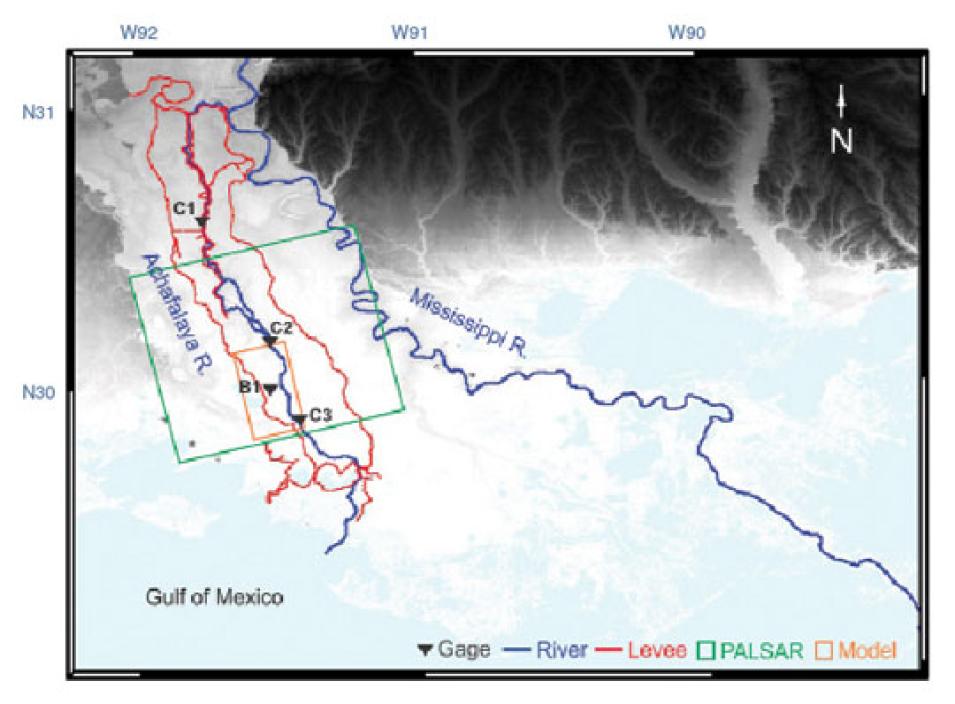Jung set out to calibrate the hydrodynamic model using a radar technique called interferometric synthetic aperture radar (InSAR). The Advanced Land Observing Satellite (ALOS) carries three sensors, including the Phased Array type L-band Synthetic Aperture Radar (PALSAR), which offers landscape mapping and monitoring through InSAR. Change in elevation or surface deformation is detected by comparing satellite snapshots over time. ALOS PALSAR cycles every forty-six days, meaning two instantaneous snapshots of water levels could provide a change in the floodplain water elevation.
To get an accurate model, Jung ran the LISFLOOD-ACC for two months, trying to match the change of water elevation within his model to the results of the satellite data. One of the model’s calibration parameters is Manning’s Roughness, a friction coefficient based on the topography of the riverbed and floodplain. Smooth surfaces, like clay, have a low roughness, but a jagged bottom or something with trees in it will be high. More friction means slower discharge speeds and different water levels. The model is then set up using river gauge data that represent the shape of the channel and the amount of discharge for that particular spot. “Then you run your model,” Jasinski said. “And you compare the heights you get for the floodplain with the change of heights from the ALOS PALSAR satellite data and the in situ data. You run it for a number of roughness values and when the value matches the satellite height to the model height, you get your calibrated model. It’s a straightforward matching.” The best match provides the most-comprehensive value for Manning’s Roughness coefficient, and that’s the model that can estimate river flow for any number of discharges.
This model, together with future satellite data, may aid in understanding other complex floodplains. “People need to know how climate change is going to affect the water resources of Earth and as a society, we need to adapt to that,” Jasinski said. If, and many think when, the Atchafalaya captures the Mississippi, the cities of Baton Rouge and New Orleans need to brace themselves for the potential turn of the Big Brown.
References
Jung, H. C., M. Jasinski, J-W Kim, C. K. Shum, P. Bates, J. Neal, H. Lee, and D. Alsdorf. 2012. Calibration of two-dimensional floodplain modeling in the Atchafalaya River Basin using SAR interferometry. Water Resources Research 48, WO7511, doi:10.1029/2012WR011951.
McPhee, J. 1987. The Control of Nature: Atchafalaya. The New Yorker. February 23.
NASA Alaska Satellite Facility (ASF) Distributed Active Archive Center (DAAC), Japan Aerospace Exploration Agency (JAXA), Japanese Ministry of Economy, Trade, and Industry (METI). 2012. Phased Array type L-band Synthetic Aperture Radar (PALSAR) Level 1.0. 2012. Fairbanks, Alaska USA.
For more information
NASA Alaska Satellite Facility Distributed Active Archive Center (ASF DAAC)
| About the remote sensing data used |
| Satellite |
Advanced Land Observing Satellite (ALOS) |
| Sensor |
Phased Array type L-band Synthetic Aperture Radar (PALSAR) |
| Data set |
PALSAR Level 1.0 |
| Resolution |
20 to 50 meter |
| Parameter |
Interferometric synthetic aperture radar (InSAR) |
| DAAC |
NASA Alaska Satellite Facility Distributed Active Archive Center (ASF DAAC) |
The photograph in the title graphic shows the swampy environment of the Atchafalaya basin (Courtesy M. Levine)


